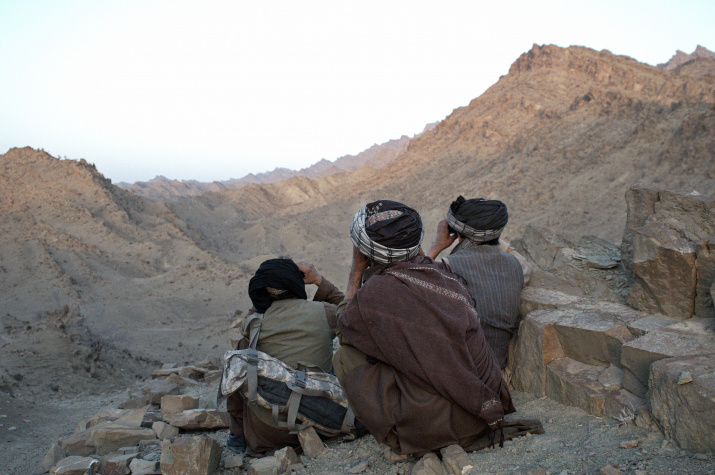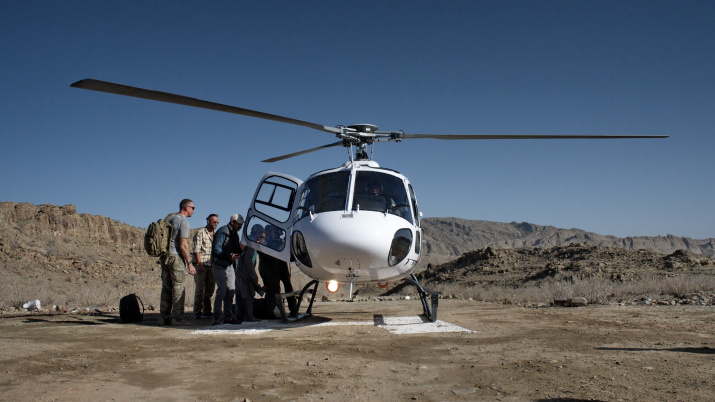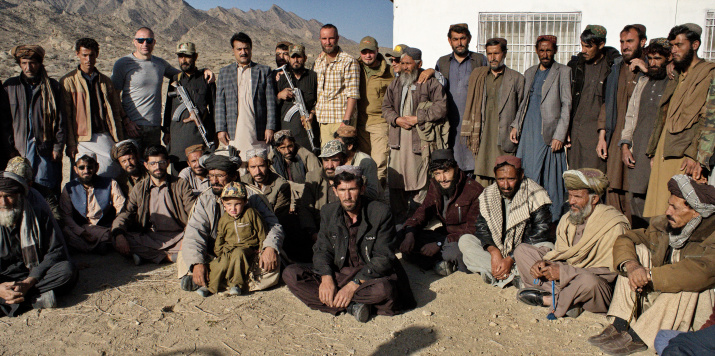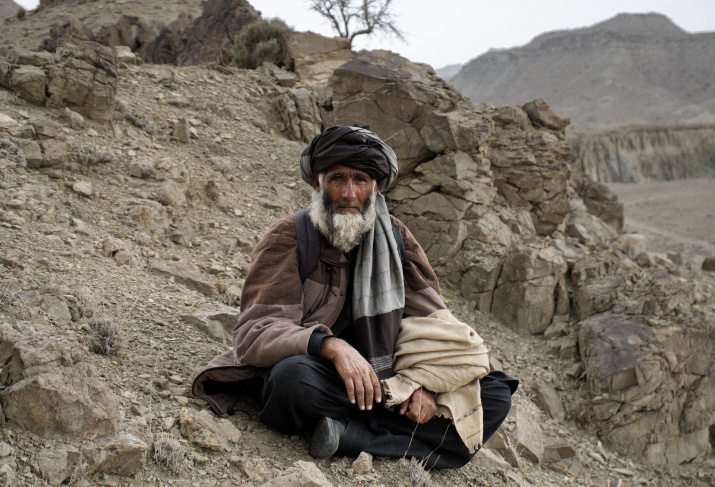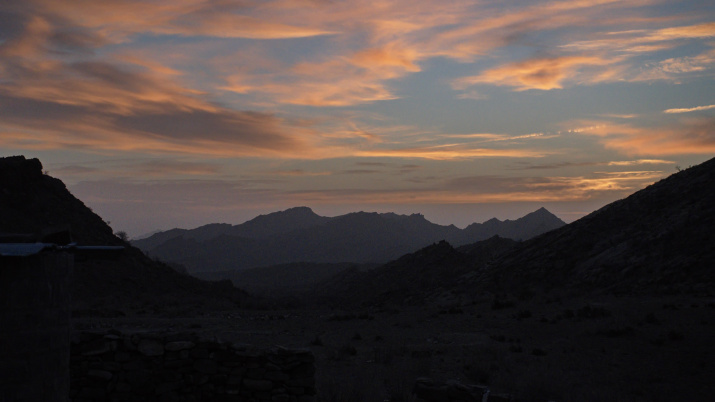Alexander D'oro is a member of the Russian Geographical Society, a director of documentaries and features, a producer, professional photographer, and artist. He travels worldwide to film programs on nature conservation, ethnography, and hunting.
In early March 2022, Alexander and three companions flew to Pakistan, visiting the Sulaiman Mountains in Balochistan. Their purpose was to participate in the Torghar conservation project. After flying from Moscow to Islamabad, local friends met them at the airport.
They took a private helicopter to Zhob for refueling before heading to the mountains, a journey of 4-5 hours from Islamabad. All aviation in Pakistan is military-owned, and the Pakistan Air Force provided their helicopter. Commercial pilots are well-trained with extensive flight hours, also handling specialized missions like tourist transport to Everest.
For nearly 30 years, the Torghar community has worked to conserve three endangered species: the Suleiman markhor (Capra falconeri), Afghan urial (Ovis orientalis), and snow leopard (Panthera uncia).
Conservation efforts began with snow leopards, once heavily hunted. Poverty, civil strife, and rampant poaching threatened their main food sources, the markhor and urial. Urgent action was necessary, leading American wildlife conservation specialists to Pakistan and the development of the Torghar project.
The project was based on trophy hunting. Pakistan is a difficult region, you can't take tourists there to see elephants and tigers like they do it in India. The country lacks the resources for five-star accommodations and infrastructure yet, and trophy hunters don’t need all that, they require only basic lodging, even a shepherd's hut suffices. They often take pride in enduring harsh conditions. Another unique aspect of the project is the steep cost of animal licenses, reaching tens of thousands of dollars.
Initially, the project was a collaborative effort between local wildlife organizations and the government, but it failed. Balochistan was tribal territory, where the government lacked actual authority. The tribes did not accept strangers violating their freedom and interfering with their lives. When locals discovered that hunting licenses were sold to foreigners, they retaliated by killing rare species listed by IUCN in spite of the authorities, further endangering wildlife.
In 1991, experts reviewed the challenges and developed the second model of the project. The key difference is that hunting and license sales are now managed by the local community, rather than the government. The community counts the animals, protects them, and applies for licenses. 80% of the income from licenses goes to the local community budget, which can be spent at its discretion, while only 20% remains with the state. This funding is typically used to build schools, hospitals, roads, dams, and water tanks, which are essential in this arid region. The government also oversees animal counting, scientific research, and genetic material collection. Thanks to this model, local residents recognized the importance of animal conservation, and within two years, they completely ceased hunting markhors and urials.
A community can only obtain a license if it has a certain number of trophy animals at year-end. For example, if there are three trophy males, the community receives one license. If next year there are six, they get two licenses. The larger the population increase, the more licenses are issued, attracting more hunters and revenue.
Hunters are only interested in old males with the largest horns, typically around 9-10 years of age. Animals younger than nine are not accepted by hunting clubs. By this age, trophy males, which live for 10 to 15 years, have already passed on their genes and no longer contribute to reproduction, yet continue to consume limited food resources. At best, they'll become prey for predators; at worst, they'll die naturally. Selling a license for tens of thousands of dollars benefits both the species and local communities, making it a highly favorable scenario.
Thanks to the second model of the Torghar project, not only have the Suleiman markhor, Afghan urial, and snow leopard populations been preserved (with snow leopard hunting prohibited), but their numbers have also increased. The markhor population has tripled, while the larger urial population has doubled.
In 2008, the Torghar Program received the prestigious Markhor Award for its success in wildlife conservation in Balochistan and the Sulaiman Mountains. That same year, Tajikistan adopted the Torghar model, successfully preserving and increasing the populations of Bukhara markhor and urials, as well as restoring the snow leopard population, thanks to conservation organizations that catalyzed these projects.
The examples of Pakistan and Tajikistan demonstrate that conservation through trophy hunting, funded by local communities, effectively preserves animal species, eradicates poaching, and increases populations. Similar projects exist beyond Tajikistan and Pakistan in many countries.
“During our visit to the Torghar community, we spent several days in the Sulaiman Mountains observing the populations of markhors and urials. We saw numerous herds of markhors, with five to seven adult trophy males in each. This indicates they are being monitored and that the population is recovering. Over two days, we observed many herds of urials, with around ten trophy males. These are very promising indicators.
We witnessed the benefits of this project firsthand and how the community has flourished thanks to the wildlife conservation program. They've built proper houses instead of tents, created water tanks, and constructed roads. Now, children and women have access to education, and medical care is available. Moreover, thanks to this initiative, the conflicts between tribes that used to fight over territory have ended. Currently, there are about 600 people in the community, all living in peace, raising livestock, growing crops, organizing hunts, and preserving nature,” notes Alexander D'oro.

